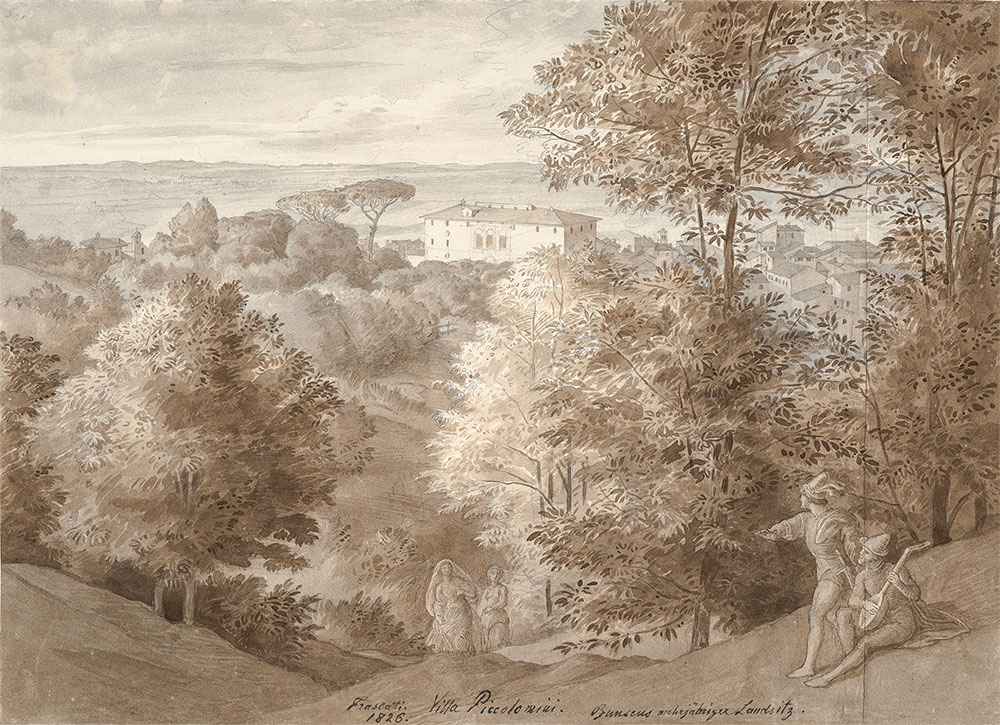
On a forested hill overlooking the Villa Piccolomini near Frascati, two young men in Renaissance-style dress break from their pastoral concert as two women approach. Though the characters that populate Schnorr von Carolsfeld’s scene are imaginary, the detailed landscape punctuated by brightly lit trees, skillfully described using the reserve of the sheet, derives from firsthand study. During the artist’s extensive travels in Italy from 1818 to 1827, he produced over one hundred landscape drawings, which were later bound in an album. Reflecting on these Italian works in 1867, Schnorr von Carolsfeld reminisced about the “ten exceedingly happy days” he spent in the countryside around the Villa Piccolomini, where he made this drawing.
Julius Schnorr von Carolsfeld
German, 1794–1872
Park and Villa Piccolomini near Frascati, 1826
Pen and brown ink with brown and gray wash over graphite pencil
Kupferstich-Kabinett, Staatliche Kunstsammlungen Dresden, INV. NO. C 1908-819
© Kupferstich-Kabinett, Staatliche Kunstsammlungen Dresden
Ian Hicks, Moore Curatorial Fellow
Schnorr von Carolsfeld was inspired toward the genre of landscape through the example of the previous generation of German and Austrian artists, including Joseph Anton Koch, whose work is displayed elsewhere in the exhibition. Following their example, Schnorr von Caroslfeld journeyed to Italy, where he travelled extensively from his mid-twenties into his early thirties, producing over a hundred landscape drawings that were later bound into an album. As the artist’s inscription along the lower margin makes clear, this drawing details the wooded hills overlooking the Villa Piccolomini, near the town of Frascati. The sheet is dated 1826, toward the end of his Italian sojourn.
While the landscape and the play of light record the artist’s careful observation of nature, the figures are an imagined fantasy. They are clad in Renaissance-style dress, perhaps inspired by the sixteenth-century villa. The scene isn’t clearly tied to a known narrative, but rather shows a more generic pastoral encounter between the two couples, evoking an Arcadian ideal. In writing a series of letters some forty years later to describe the drawings in his landscape album, Schnorr von Carolsfeld would reveal the pleasure he took in creating the work. He fondly reminisced over, as he put it, the “ten exceedingly happy days” he spent in the countryside around the Villa.
